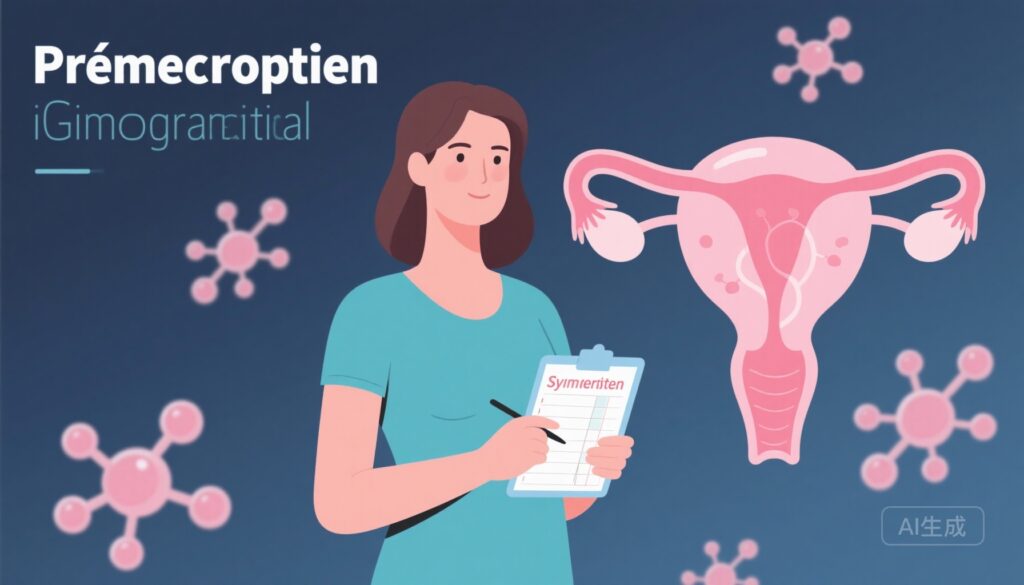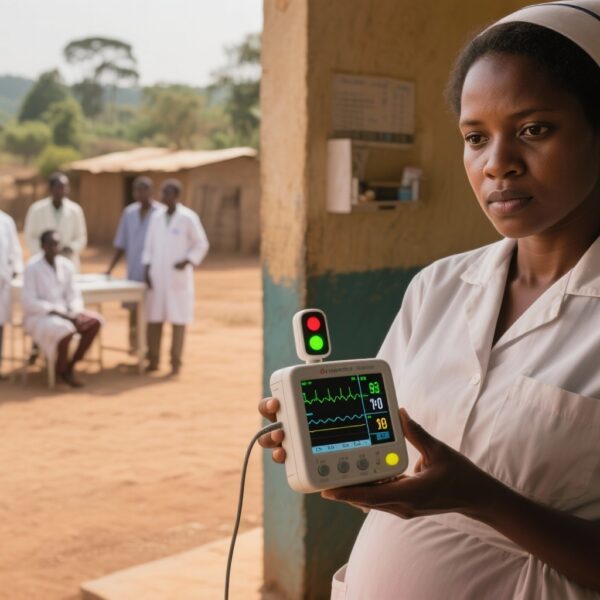Highlight
• HMI-115, a human monoclonal antibody that non-competitively blocks the prolactin receptor, produced dose-dependent pain reductions in a global phase II proof-of-concept trial for endometriosis-associated pain (premeno women).
• At 240 mg every 2 weeks subcutaneously for 12 weeks, dysmenorrhea NRS fell by 41.6% versus 18.6% with placebo; non-menstrual pelvic pain also improved and effects persisted through a 25-week follow-up.
• HMI-115 did not induce hypoestrogenic adverse effects, did not suppress ovulation or menses, and maintained bone density and major sex-hormone levels over the treatment period.
Background and Unmet Need
Endometriosis affects an estimated 5 to 10 percent of reproductive-age women and is a leading cause of chronic pelvic pain, dysmenorrhea, dyspareunia, infertility, and reduced quality of life. Current first-line medical treatments for pain rely heavily on hormonal suppression, including combined oral contraceptives, progestins, and gonadotropin-releasing hormone (GnRH) agonists or antagonists. While often effective, these options suppress ovulation and menstruation and carry hypoestrogenic side effects that limit long-term tolerability and are undesirable for patients who wish to preserve fertility. There is therefore a substantial clinical need for effective non-hormonal therapies that provide analgesia without impairing reproductive function or causing estrogen deficiency.
Rationale: Targeting Prolactin Signaling
Prolactin and prolactin receptor signaling have been implicated in the pathophysiology of endometriosis through effects on inflammatory, angiogenic, and nociceptive pathways in preclinical models and observational studies. Blocking the prolactin receptor (PRLR) represents a biologically plausible, non-hormonal approach to modulate lesion-associated inflammation and pain perception while sparing the hypothalamic-pituitary-ovarian axis. HMI-115 is a high-specificity human monoclonal antibody that non-competitively inhibits PRLR-mediated signaling; preclinical and phase I data indicated acceptable tolerability and supported clinical testing in endometriosis-associated pain.
Study Design
The reported trial (Zhu et al., The Lancet Obstetrics, Gynaecology, & Women’s Health) is a multicenter, randomized, double-blind, placebo-controlled, proof-of-concept phase II study enrolling 108 premenopausal women with surgically confirmed endometriosis (laparoscopy or laparotomy) and moderate-to-severe endometriosis-associated pain. Participants were randomized 1:1:1:1 to subcutaneous HMI-115 60 mg, 120 mg, or 240 mg, or placebo, administered every 2 weeks for 12 weeks. The primary efficacy endpoint was percent change in dysmenorrhea pain on a numerical rating scale (NRS) from baseline to Week 13. Secondary assessments included non-menstrual pelvic pain NRS, Endometriosis Daily Impact Pain scale (EDIP), rescue NSAID use, and safety/tolerability measures including adverse events, hormone levels, and bone mineral density. A follow-up visit at Week 25 assessed persistence of effect and safety.
Key Results
Patient population and retention: 108 women were randomized and treated. Baseline demographic and disease characteristics were balanced across groups; all participants had surgically confirmed endometriosis. Detailed baseline NRS scores and absolute changes are reported in the primary manuscript.
Efficacy
Primary endpoint — dysmenorrhea NRS percent change at Week 13:
• HMI-115 240 mg: 41.57% reduction versus baseline.
• HMI-115 120 mg: 34.72% reduction.
• HMI-115 60 mg: 27.35% reduction.
• Placebo: 18.61% reduction.
The 240 mg group demonstrated a statistically significant greater percent reduction in dysmenorrhea compared with placebo. Lower doses showed a dose–response trend but reached statistical significance primarily for the highest dose.
Non-menstrual pelvic pain and other patient-reported outcomes
All HMI-115 dose groups showed reductions in non-menstrual pelvic pain NRS. Improvements in EDIP scores were observed across treatment arms receiving HMI-115, indicating a reduction in pain-related daily-life impact. Rescue analgesic use was reduced in HMI-115 groups compared with placebo, consistent with patient-reported improvements.
Durability
At the Week 25 follow-up (approximately 12 weeks post-treatment), pain benefits persisted, notably in the 240 mg cohort, suggesting a sustained effect beyond the 12-week dosing period for some patients.
Safety and tolerability
Treatment-emergent adverse event (TEAE) rates were dose-related: 56% (60 mg), 59% (120 mg), 75% (240 mg), and 37% (placebo). The most frequently reported events were injection-site reactions (pruritus, rash), dizziness, nausea, nasopharyngitis, and headache. No treatment-related deaths or treatment-emergent serious adverse events were reported. Importantly, HMI-115 did not produce the low-estrogen effects commonly seen with hormonal therapies: vasomotor symptoms and mood changes associated with hypoestrogenism were not increased, and bone mineral density and principal sex-hormone concentrations remained stable during the study window.
Strengths of the Study
• Randomized, double-blind, placebo-controlled design enhances internal validity for a proof-of-concept trial.
• Surgical confirmation of endometriosis improves diagnostic accuracy and reduces heterogeneity related to misclassification.
• Inclusion of multiple dose levels allowed demonstration of a dose–response relationship.
• Measurement of reproductive hormones and bone density addressed major safety concerns inherent to endometriosis therapies.
Limitations and Considerations
• Sample size and duration: As a phase II proof-of-concept study, the trial enrolled a modest number of participants and had a relatively short active treatment period (12 weeks). Long-term efficacy and safety, including continued effects on bone health and fertility outcomes, remain uncharacterized.
• Absolute NRS values and responder thresholds: The publicly reported endpoints emphasize percentage change. Clinicians will want to review absolute reductions and standard responder metrics (for example, proportion achieving 30% or 50% pain reduction) to better interpret clinical relevance on an individual patient basis.
• Generalizability: Participants were premenopausal women with surgically confirmed disease. How results translate to patients with clinically suspected but non-surgically verified endometriosis, or to varied racial/ethnic populations, requires further study.
• Adverse events: While no serious treatment-related events were reported, the higher overall TEAE frequency in the 240 mg arm (75%) warrants monitoring in larger cohorts to characterize tolerability and discontinuation rates over longer exposure.
• Mechanistic uncertainty: Although preclinical evidence supports a role for prolactin signaling in endometriosis-associated pain, the precise mechanisms by which PRLR blockade reduces pain in humans require additional translational work, including biomarker and tissue-level studies.
Clinical and Translational Implications
HMI-115 represents a first-in-class, non-hormonal approach to ameliorating endometriosis-associated pain by targeting prolactin receptor signaling. Key potential advantages include preservation of ovulatory function and menstruation, absence of hypoestrogenic adverse effects, and a different side-effect profile from hormonal agents. These features make HMI-115 an especially appealing investigational option for patients with pain who wish to conceive or who cannot tolerate, or prefer to avoid, estrogen-suppressive therapies.
Next Steps
The phase II findings support progression to larger, longer Phase III trials to confirm clinical benefit, to define optimal dosing, and to further characterize safety, including long-term bone health, reproductive outcomes, pregnancy safety, immunogenicity of the monoclonal antibody, and impacts on lesion progression. Head-to-head comparisons with standard hormonal treatments could clarify relative efficacy and patient-centered outcomes such as fertility preservation, quality of life, and treatment satisfaction.
Practical considerations for clinicians
While HMI-115 is not yet approved for clinical use, clinicians should note the growing pipeline for non-hormonal endometriosis therapies. Important future clinical questions will include patient selection (which phenotypes derive greatest benefit), integration with surgical and fertility care pathways, monitoring requirements (e.g., injection-site reactions, immunogenicity), and cost-effectiveness compared with existing treatments.
Conclusion
The published phase II trial demonstrates that subcutaneous HMI-115 yields clinically meaningful, dose-dependent reductions in endometriosis-associated pain with a safety profile distinct from estrogen-suppressing therapies. Preservation of ovarian function and the absence of hypoestrogenic effects are particularly notable and support advancing development into larger, longer trials to establish definitive efficacy, safety, and reproductive implications.
Funding and Trial Registration
The study was conducted by a collaborative academic and industry team including the developer of HMI-115 and investigators at Peking University, Peking Union Medical College Hospital, Shandong University, and other centers. HMI-115 development and global licensing activities involve a collaboration signed in 2019 between 和其瑞 and Bayer AG for development and commercialization of PRLR-targeting antibodies. HMI-115 has been listed by the China National Medical Products Administration (NMPA) Center for Drug Evaluation as a Breakthrough Therapy designation candidate for treatment of moderate-to-severe endometriosis-associated pain. For precise details on funding sources and the trial registration number, consult the primary publication (Zhu et al., The Lancet Obstetrics, Gynaecology, & Women’s Health).
Selected Reference
Zhu L, et al. Safety and efficacy of subcutaneous injection with HMI-115 versus placebo in endometriosis-associated pain in premenopausal women: a multicentre, double-blind, randomised, proof-of-concept phase 2 trial. The Lancet Obstetrics, Gynaecology, & Women’s Health. Volume 1, Issue 3, e174 – e188.
Dunselman GAJ, et al. ESHRE guideline: management of women with endometriosis. Human Reproduction. 2014;29(3):400-412. (Guideline summarizing current standard-of-care approaches and highlighting the limitations of existing hormonal therapies.)



